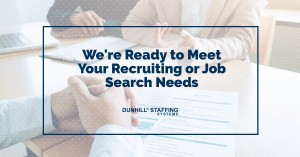Recruitment marketing is how businesses attract, engage, and nurture skilled individuals long before they apply. In a market where top performers choose their employers as carefully as companies choose staff, a proactive and human-centered approach has become essential.
Recruitment marketing combines employer branding, personalized communication, and data-driven nurturing to build a steady talent pipeline. To excel:
- Define your brand story and promise.
- Use market segmentation to personalize outreach.
- Engage candidates through authentic content and consistent experiences.
- Measure, refine, and repeat.
Why It Matters
- Problem:
Posting jobs alone no longer attracts the right candidates. Skilled individuals expect clarity, transparency, and relevance before engaging. - Solution:
Recruitment marketing treats candidates like valued customers—building awareness and trust through storytelling, social engagement, and targeted nurturing. - Result:
Organizations that market their culture effectively attract stronger applicants, reduce time-to-hire, and improve long-term retention.
Core Best Practices
1. Define a Clear Employer Brand
Clarify what your company stands for—its mission, values, and growth mindset. Showcase genuine employee stories, transparent benefits, and clear advancement paths. Authenticity drives trust.
2. Segment and Personalize
Different audiences respond to different motivations. Demographic, behavioral, and psychographic segmentation helps tailor campaigns to each candidate group. Applying structured market segmentation ensures every message feels personally relevant.
3. Craft Compelling Content
Create blogs, social posts, and short videos that highlight life at work. Free design tools like Canva help teams maintain cohesive visual branding across channels.
4. Engage Where Candidates Already Are
Developers favor GitHub, designers live on Dribbble, marketers network on LinkedIn. Identify those hubs and meet talent there. Use trend data from Statista to refine channel choices.
5. Make the Experience Seamless
From job page to offer letter, remove friction. Modern applicant-tracking tools such as Workable simplify communication and speed up response times—critical for top-tier candidates.
6. Nurture, Don’t Neglect
Stay in touch with potential hires through email updates or community newsletters. Platforms like Mailchimp make it easy to automate ongoing engagement while keeping the tone personal.
7. Measure What Works
Track conversions, application rates, and engagement. Data from Google Analytics highlights which channels and messages attract the best applicants so you can reinvest accordingly.
How to Launch a Recruitment Marketing Program
- Identify your candidate personas. Outline demographics, motivations, and challenges.
- Audit your assets. Review your careers page, application flow, and social presence for clarity and inclusivity.
- Build a content calendar. Plan storytelling moments—employee features, success metrics, and milestones.
- Promote and nurture. Use social amplification and email drip sequences to maintain visibility.
- Evaluate outcomes. Compare hires, engagement rates, and brand sentiment quarterly, then refine messaging.
Recruitment Marketing Checklist
✅ Define your employer brand statement
✅ Apply segmentation and personalize messaging
✅ Publish value-driven, authentic stories
✅ Ensure mobile-friendly, accessible candidate journeys
✅ Maintain regular social and email engagement
✅ Track conversion and engagement metrics
✅ Reassess quarterly for continuous improvement
Product Spotlight: Streamlining Collaboration with Trello
Efficient internal coordination keeps recruitment campaigns on track. Tools like Trello visualize workflows—from sourcing to onboarding—so hiring managers, recruiters, and marketing teams stay aligned. Organized collaboration ensures no promising lead or follow-up slips through the cracks.
FAQs
Q1: What’s the main difference between employer branding and recruitment marketing?
Employer branding defines who you are; recruitment marketing communicates it to target audiences.
Q2: Should smaller companies invest in it?
Yes—smaller organizations often benefit most because thoughtful storytelling levels the playing field against larger competitors.
Q3: How long until results show?
You’ll usually notice increased engagement within 3–6 months and stronger pipelines within a year.
Q4: What metrics matter most?
Quality of hire, time-to-fill, engagement rate, and source effectiveness.
Glossary
- Employer Brand: How prospective employees perceive your organization.
- Candidate Persona: A semi-fictional model of your ideal hire.
- Engagement Rate: The percentage of users who interact with your recruiting content.
- Talent Pipeline: A pool of engaged potential candidates ready for future roles.
- Nurture Campaign: A structured communication flow that keeps prospects interested.
Conclusion
Recruitment marketing turns hiring into relationship-building. By combining strong branding, meaningful segmentation, and consistent measurement, companies attract candidates who align not only with job requirements—but with the organization’s purpose and culture.







